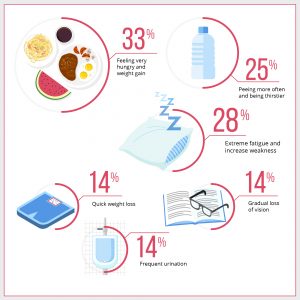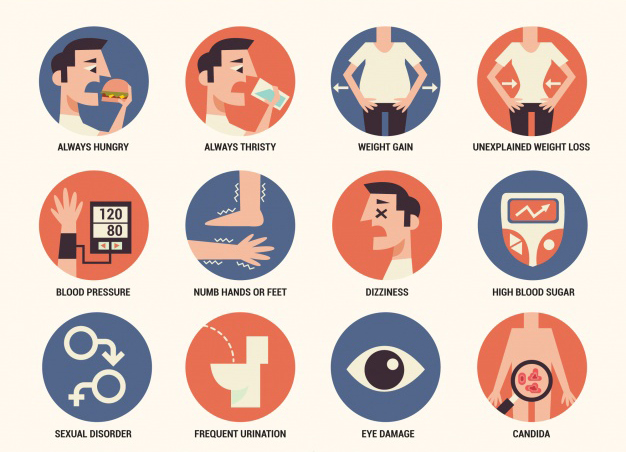
What is diabetes?
Insulin, is a hormone made by the pancreas, which is an organ situated near the stomach. After eating sugar travels all over your body and reach the cells. This insulin helps sugar to get into the body's cells. The cells then use the sugar to give you energy.
Sometimes your body doesn’t make enough or no insulin at all or doesn’t use insulin properly. Glucose then stays in your blood and doesn’t reach your cells.These conditions can make a person diabetic.
What are the types of diabetes?
According to these reasons here are two types of diabetes-type 1 and type 2.
In type 1 diabetes, a condition in which the pancreas produces no insulin. The body glucose can't get into the cells and it stays in the blood. This makes the blood sugar level very high. Type 1, is also called juvenile diabetes or insulin-dependent diabetes because it often develops before age 30.
In type 2 diabetes, the pancreas still produces insulin but the cells can't use it.This is because type 2 diabetics do not respond to insulin as they normally should and if not controlled then in the future, they often don’t make enough insulin.


What is pre-diabetes?
‘Pre’ means before. A person with prediabetes does not have diabetes. Prediabetes means your blood sugar is high, but not high enough to be type 2 diabetes. It also means you’re at risk for type 2 diabetes.
What are the results that help you to know you are prediabetic?
- an HbA1C level of 5.7 to 6.4 percent
- a fasting plasma glucose test result of 100–125 mg/dL, or
- a 2-hour oral glucose tolerance test result of 140–199.
Why should I care about whether I am prediabetic or not?
Prediabetes condition needs attention because if neglected then it may be harmful for you and increases your risk of heart disease and stroke.
On the other hand, if you take this alert seriously and on time by managing the condition then you may actually prevent the disease.
Diabetes can cause long term damage to our body. Diabetes affects our blood vessels and nerves and therefore can affect any part of the body. Diabetic complications will usually take a number of years of uncontrolled diabetes to develop. The damage caused for a long time is called diabetic complications. The organs commonly affected are as follows:
Type 1
Our body's immune (defence) system which normally fights againstharmful bacteria or viruses, attacks and kills our insulin-producing cells in the pancreas instead. This leaves us with little or no insulin.
Type 2
Our cells do not respond to the action of insulin, and to make it worse our pancreas is unable to make enough insulin to overcome this difficulty. So being not able to enter the cells, sugar builds up in our bloodstream.
Risk factors for type 2 diabetes/prediabetes include:
- High Body Mass Index (BMI).
- Little or no physical activity.
- Family history of diabetes.
- Age.
- High blood pressure.
- Abnormal cholesterol and triglyceride levels.
- Race/ethnicity (African American, Latino, American Indian, Asian).
- In women Gestational diabetes and Polycystic ovary syndrome.


What are the symptoms of high blood sugar?
If you think that you have diabetes, check for the following symptoms include the:
- Frequent urination, Excessive thirst, Extreme hunger
- Unexplained weight loss
- Sudden vision changes
- Tingling or numbness in the hands or feet
- Feeling very tired much of the time
- Very dry skin
- Sores that are slow to heal
- More infections than before
